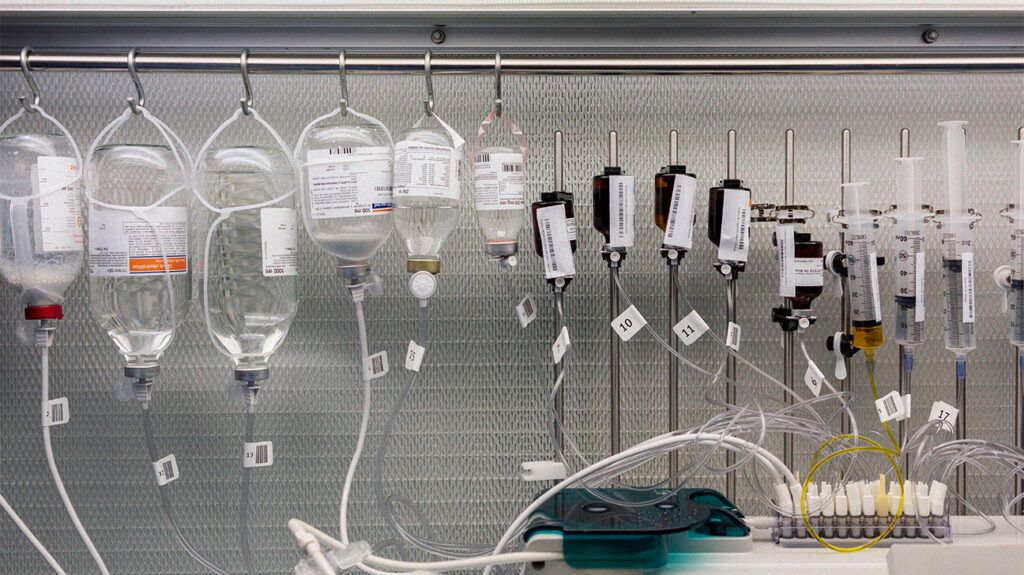
- High cholesterol, particularly high levels of low-density lipoprotein cholesterol (LDL-C, or ‘bad cholesterol’), increases the risk of heart disease.
- Some people have a hereditary condition that results in very high levels of LDL-C.
- A new study has used an intravenous infusion to turn off a gene that controls blood LDL-C, resulting in a significant reduction in LDL-C in people with one copy of the gene.
- The researchers suggest that this gene-editing technique could provide long-term treatment for high LDL-C in people with this inherited risk.
High cholesterol is a common issue worldwide. According to the
In the United States, around
However, too much low-density lipoprotein cholesterol (LDL-C, or “bad” cholesterol) is a risk factor for heart disease.
As well as age, type 2 diabetes and obesity, lifestyle factors, such as a diet high in
For some people, raised LDL-C has a genetic cause. Around one in 250 people have an inherited condition,
Currently, treatment for familial hypercholesterolemia is daily statins or injections every few weeks to inhibit the activity of a gene,
However,
Now, researchers in the U.S., United Kingdom, and New Zealand have used
They presented their findings at the
Dr. Cheng-Han Chen, board-certified interventional cardiologist and medical director of the Structural Heart Program at MemorialCare Saddleback Medical Center in Laguna Hills, CA, not involved in this research, told Medical News Today:
“This study utilized a form of gene editing technology, packaged by lipid nanoparticles and delivered to the liver through a single intravenous injection, in order to disable a protein responsible for regulating the amount of LDL (‘bad cholesterol’) in the bloodstream. Although this first-in-human trial was very small, it did show a large drop in LDL levels in a few patients.”
This first human trial followed
“We are now able to show that we can make a single spelling change in the DNA of a liver of a human being and have a clinical effect. This is the first time that’s ever been done,” Dr. Sek Kathiresan, CEO and co-founder of Verve Therapeutics, the company that developed the therapy, told MNT.
The ongoing human study, run by Verve Therapeutics, includes just nine people — seven men and two women — all of whom have heterozygous familial hypercholesterolemia, meaning that they inherited a single gene for the condition from one parent. Eight of the participants are white, and one is Asian.
All the participants, who had a mean age of 54 years, had very high levels of LDL-C, despite taking the maximum-tolerated dose of anti-cholesterol medications. They all also had some form of cardiovascular disease.
The researchers gave the participants a single intravenous infusion of VERVE-101, with doses ranging from 0.1 milligrams per kilogram (mg/kg) to 0.6 (mg/kg) of body weight. They gave the higher doses to later patients, following independent safety monitoring. So far, participants have been followed up for 6 months.
Three of the participants, who received the higher levels of the drug, showed significantly reduced levels of both PCSK9 protein and LDL-C.
In the two participants who received 0.45 mg/kg of the drug, LDL-C reduced by 39% and 48%, respectively. The one person given 0.6 mg/kg, had a 55% reduction in LDL-C.
Dr. Rigved Tadwalkar, a board-certified cardiologist at Providence Saint John’s Health Center in Santa Monica, CA, who was not involved in the study, welcomed the findings.
“The idea of a one-time therapy to significantly reduce LDL-C presents a novel direction in cholesterol management, possibly eliminating the need for lifelong adherence to medication,” he told us.
Most participants experienced only mild, short-lived side effects. However, two participants with underlying advanced coronary artery disease suffered serious cardiovascular events after the infusion.
Dr. Kathiresan told MNT that these incidents were consistent with their underlying severe heart disease, adding:
“Recall that this is not a study in healthy volunteers but a study which enrolled the sickest of the sick heart disease patients. The independent data and safety monitoring board reviewed all of the safety data and has asked us to continue treating.”
Dr. Chen nevertheless expressed concern about the serious events, and warned that there might be other effects of the treatment. “In addition, longer clinical trials are also needed to study potential off-target effects of this gene editing technology,” he noted.
“This technique, considered more precise than traditional CRISPR, shows potential for treating high cholesterol. However, concerns include treatment cost, long-term safety issues and adverse events observed in two participants. Further research with a larger group is planned to address safety concerns, emphasizing the need for ongoing evaluation of the base editor’s effectiveness and safety,” Sebnem Unluisler, genetic engineer at the London Regenerative Institute, not involved in the study, told MNT.
Dr. Tadwalkar agreed that more research is needed. “Exploring its applicability beyond the specific subset of individuals studied, as well as assessing its scalability and cost-effectiveness are essential steps toward widespread clinical implementation,” he told us.
And more research is planned, according to Dr. Kathiresan:
“Verve will continue to enroll patients in the higher dose cohorts (0.45 mg/kg and 0.6 mg/kg) and plans to activate to sites in the U.S. After completing the phase 1 trial in 2024, we plan to move to larger phase 2 trial in 2024 where the treatment is compared with placebo in a randomized fashion in a larger number of individuals.”
If efficacy and safety are proven in larger, more diverse populations, Dr. Tadwalkar believes that this technology has the potential to change treatment for hereditary high cholesterol.
“Compared to existing treatments, this gene editing method stands out due to its proposed long-term effects. The ability to achieve substantial reductions in LDL-C with a one-time treatment could significantly enhance patient compliance and overall outcomes in cholesterol management,” he noted.
